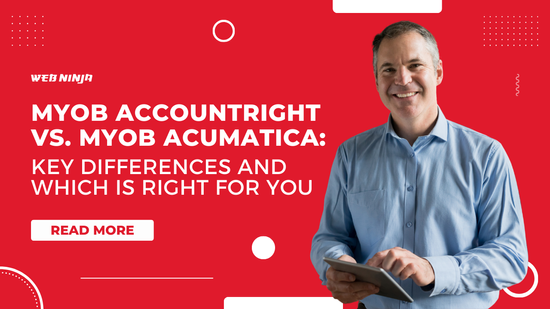The Most Common SEO Jargon Every Website Owner Should Know (Without the Hype)
Updated on 28 May 2025 | By Jeffrey Almarez | 7-minute read
If you’ve ever sat through an SEO meeting and found yourself silently googling terms mid-conversation, you’re not alone. Search engine optimisation (SEO) has a language of its own—and it evolves fast. For business owners, marketers, and website managers who already wear multiple hats, learning SEO doesn’t need to feel like learning code.
This guide cuts through the noise and explains the most common SEO terms in plain English—no fluff, no hype. Whether you're doing it yourself or working with an SEO service provider like Web Ninja, understanding these basics will help you make smarter decisions and get better results.
What Is SEO, Really?
Search engine optimisation is about improving your website so it appears more prominently in search engine results when someone looks for products, services, or information you offer. It’s not just about ranking #1—it’s about being visible where it matters.
Search engines like Google use automated systems (called algorithms) to decide which pages to show users. SEO is about aligning your site with those systems in a way that also genuinely serves your visitors. That’s a key difference—real SEO isn’t about gaming the system. It's about building credibility, improving usability, and earning your place on the results page.
Essential SEO Terms and What They Actually Mean
Let’s break down the most commonly used terms you’re likely to encounter, along with how they relate to your day-to-day operations.
1. SERP (Search Engine Results Page)
This is the page you see after typing a query into Google or Bing. It’s made up of:
- Organic results: Listings that appear based on relevance (not paid).
- Paid results: Ads placed through platforms like Google Ads.
- Featured snippets: Short answers pulled from web pages, shown above regular results.
Why it matters: The higher your page ranks on the SERP, the more likely users are to click. According to a Backlinko study, the first organic result gets about 27.6% of all clicks.
2. Indexing
Before your site can appear in search results, it needs to be indexed. This means Google has found your page, scanned its content, and stored it in its database.
Think of it like a library catalogue—if your book isn’t listed, it won’t be found, even if it’s on the shelf.
How to check: Type site:yourdomain.com into Google. If nothing shows up, your site might not be indexed properly.
3. Crawling
This is how search engines discover content. Bots (often called “spiders”) follow links across the web and collect data from your pages.
What to do:
- Make sure your site has a sitemap (more on that later).
- Avoid broken links and dead pages.
- Use internal linking to help bots navigate.
4. Keywords
These are the words and phrases people type into search engines. Identifying and using relevant keywords in your content helps your pages show up when people search.
For example: If you run a Melbourne-based plumbing business, key terms might include “emergency plumber Melbourne” or “blocked drain repair”.
Tip: Use tools like Google Keyword Planner or Ubersuggest to discover what your audience is searching for.
5. Meta Tags (Title + Description)
Meta tags live in the backend code of your site, but they’re visible in search results.
- Title tag: The clickable blue link.
- Meta description: The summary underneath.
Best practice: Write clear, concise descriptions (under 160 characters) that accurately reflect the page’s content. It won’t directly boost rankings, but it can increase your click-through rate.
6. Backlinks
A backlink is when another website links to yours. Think of each link as a vote of confidence.
Example: If Choice.com.au links to your guide on energy-efficient appliances, that signals trust to Google.
Not all links are equal. A backlink from a reputable site like ABC News carries far more weight than one from an obscure blog.
Tip: Focus on earning backlinks through high-quality content, partnerships, and digital PR—not buying them. Google’s guidelines are clear on this.
7. Domain Authority
Coined by Moz, Domain Authority (DA) is a score from 1 to 100 that predicts how likely a website is to rank. It’s influenced by factors like backlinks, content quality, and site age.
Important: Google doesn’t use DA as a ranking factor, but SEO tools do. It’s useful for benchmarking your site against competitors.
8. On-Page Optimisation
This is everything you do on your own website to improve SEO. It includes:
- Keyword placement
- Internal links
- Image alt tags
- Mobile-friendliness
- Readability
Tip: Use free tools like Yoast SEO for WordPress or Ahrefs’ Site Audit to spot issues.
9. Off-Page Optimisation
This refers to actions taken outside your website that impact rankings. Think:
- Link building
- Social media engagement
- Guest blogging
- Online reviews
Analogy: On-page is like fixing your storefront; off-page is like building your reputation in the community.
10. Algorithm
Search engines use complex algorithms to determine which pages to rank. Google’s core updates (which happen several times a year) often change how pages perform.
Recent updates have focused on:
- Content helpfulness
- User experience (especially mobile)
- Page speed
- Trustworthiness (as detailed in their Search Quality Evaluator Guidelines)
11. White Hat vs. Black Hat SEO
- White Hat: Follows search engine guidelines, focuses on users (e.g. quality content, proper linking).
- Black Hat: Uses shortcuts and manipulative tactics (e.g. keyword stuffing, cloaking, link farms).
Why it matters: Black hat strategies may yield short-term gains but often result in penalties or de-indexing. Always aim for sustainable, ethical optimisation.
12. Duplicate Content
Duplicate content occurs when the same or very similar content appears on multiple pages or domains. It can confuse search engines and dilute ranking potential.
Fix it by:
- Using canonical tags
- Rewriting thin or copied content
- Consolidating pages with similar intent
13. Canonical Tags
If you have multiple URLs showing the same or similar content, canonical tags tell search engines which version is the "master" page.
Use case: An online shop might have product pages that vary by colour but show the same core information.
14. Sitemap
A sitemap is a file that lists all the pages on your website you want search engines to find. Submitting it to Google Search Console can speed up indexing.
Bonus: Use an XML sitemap and keep it updated as your site grows.
15. Cloaking, Link Farms, and Article Spinning (Avoid These)
These are outdated and manipulative tactics:
- Cloaking: Showing different content to users than to search engines.
- Link farms: Networks of low-quality sites linking to each other.
- Spinning: Automatically rewriting articles to create ‘new’ content.
Search engines have caught on, and these practices often lead to penalties. Stick with content that’s original, useful, and user-focused.
What to Prioritise as a Website Owner
SEO can feel like an endless checklist. To stay grounded, focus on three things:
1. Content That Answers Real Questions
What do your customers often ask you? Turn those into blog posts, FAQ pages, or guides. Resources like AnswerThePublic or People Also Ask boxes in Google can inspire relevant content.
2. Fast, Mobile-Friendly Pages
Use Google’s PageSpeed Insights to check your load times. A mobile-first approach isn’t optional anymore—Google indexes mobile versions of websites first.
3. Trust Signals
- Clear contact info
- Author bios on blog posts
- HTTPS security
- Customer reviews
These all feed into what Google calls E-E-A-T (Experience, Expertise, Authoritativeness, Trustworthiness)—a concept drawn from their own guidelines and echoed by experts at Search Engine Journal and Harvard Business Review.
You Don’t Need to Master SEO—You Just Need to Understand It
For many business owners, time is the most limited resource. If you’re nodding along but thinking, “When would I even do all this?”, you’re not alone. That’s why working with a trusted SEO partner like Web Ninja can help.
We don’t just throw jargon at you—we explain what matters, why it matters, and how we’ll handle it for you. From keyword research to technical audits, content strategy to backlink building, we provide support that’s aligned with your business goals.
Final Thought: Keep Learning, But Don’t Drown in Terminology
You don’t need to be fluent in SEO jargon to succeed—you just need to recognise what matters and avoid the shortcuts that hurt more than they help. Use this glossary as a foundation and build from there.
And if you’re ready to make SEO work for your business without doing it all yourself?
Talk to the Web Ninja team—we’re here to help you rank smarter, not harder.
Other Web Ninja Blogs
-
-
Updated on 26 May 2025 | By Jeffrey Almarez | 6-minute read Read More
-





